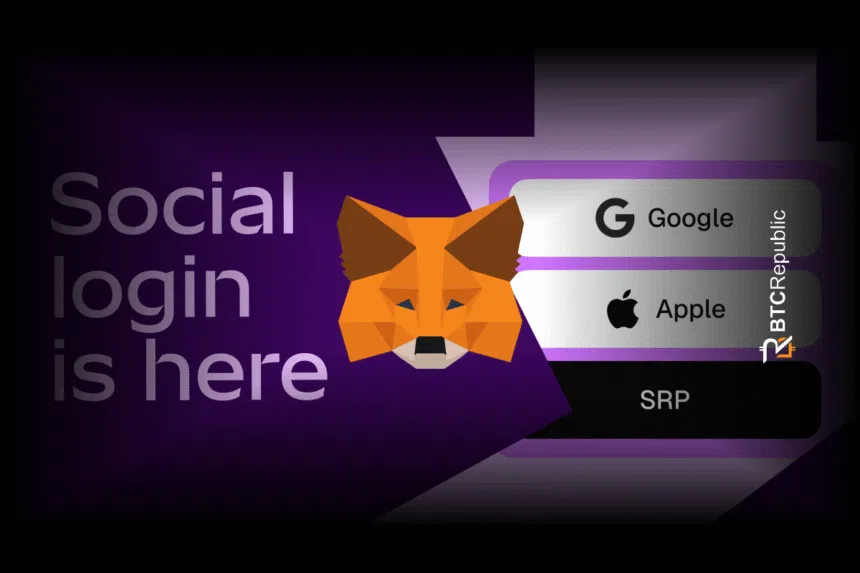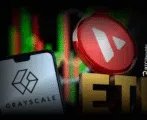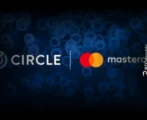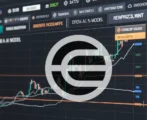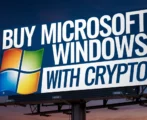MetaMask, the leading self-custodial cryptocurrency wallet, adds Google and Apple login to simplify self-custodial wallet access while eliminating seed phrase management through advanced cryptographic techniques preserving user control. This development aims to streamline the onboarding process for new users entering the decentralized finance (DeFi) and web3 ecosystems.
MetaMask Bridges Web3 And Mainstream Tech With Google And Apple Logins
MetaMask has launched social login functionality, allowing users to create and recover self-custodial wallets using Google or Apple accounts, eliminating the need to manually manage traditional 12-word Secret Recovery Phrases while preserving complete user control over private keys.
The feature combines familiar Web2 authentication with advanced cryptographic techniques, including Threshold Oblivious Pseudorandom Functions and Shamir Secret Sharing to ensure no single entity can access wallet credentials.
- MetaMask Bridges Web3 And Mainstream Tech With Google And Apple Logins
- Two-Step Setup Maintains Security While Eliminating Seed Phrase Management
- Sacrificing Security for Simplicity?
- Stablecoin Launch Positions MetaMask as Full-Service Financial Platform
- Is Google Crypto At the Heart of a Plan to Dominate and Centralise the Industry?
- Is Google Crypto Planning Focused on Becoming the Industry’s Biggest Gatekeeper?
Two-Step Setup Maintains Security While Eliminating Seed Phrase Management
Users sign in with Google or Apple credentials and create a unique password, which together unlock locally-generated Secret Recovery Phrases without compromising self-custody principles.
MetaMask emphasizes that neither the company nor social login providers can retrieve private keys or recovery phrases independently, maintaining the wallet’s decentralized security model.
“No single entity, not even MetaMask, can access all of the pieces needed in order to retrieve your SRP, preserving the self-custodial nature of your wallet,” the company said.
The innovation addresses common user errors, including lost seed phrases and inadequate backup practices, which cause significant crypto losses among mainstream users.
Social login enables seamless cross-device wallet restoration while requiring both valid social authentication and user-created passwords for recovery.
MetaMask joins other major wallets, including Phantom and Trust Wallet, in offering social authentication options, with the feature powered by Web3Auth infrastructure acquired by Consensys in June 2025.
Sacrificing Security for Simplicity?
MetaMask’s implementation uses distributed key management to split encrypted wallet data across independent server nodes, ensuring no single party controls sufficient information for unauthorized recovery.
The system generates random encryption keys on the client side and distributes them using Shamir’s Secret Sharing among multiple key-share holders.
Recovery requires both valid social login tokens and user passwords to reconstruct encryption keys.
Server-side rate limiting prevents brute force attacks, while encrypted Secret Recovery Phrases remain stored as ciphertext, requiring multiple authentication factors for decryption.
The password becomes critical as MetaMask cannot recover lost passwords, making strong password creation essential for wallet security.
Users maintain the option to export traditional 12-word recovery phrases as a backup, providing fallback access that is independent of social accounts.
However, some security trade-offs include dependency on Google or Apple account access and potential privacy implications from sharing OAuth metadata.
The system requires the continued operation of MetaMask’s key-share servers and social login providers, creating availability dependencies that are absent from traditional seed phrase storage.
Fortunately, technical reviews also indicate that the approach reduces single-point failures common with handwritten seed phrases, while introducing different risk vectors related to password management and identity provider reliability.
The cryptographic design preserves self-custody principles through client-side encryption and distributed key architecture.
Stablecoin Launch Positions MetaMask as Full-Service Financial Platform
MetaMask announced plans for MetaMask USD (mUSD), making it the first self-custodial wallet to issue a native stablecoin integrated across its ecosystem of decentralized applications.
The token will launch on Ethereum and Linea networks with plans for real-world payment integration through the MetaMask Card by year-end.
The stablecoin initiative builds on governance proposals that have been circulating since August, outlining partnerships with Stripe for payment infrastructure and the M⁰ network for decentralized issuance.
mUSD aims to serve as a base currency across MetaMask’s 30 million-user ecosystem, while supporting DeFi protocols for lending and yield opportunities.
Development coincides with growing corporate stablecoin adoption following the passage of the GENIUS Act, which established federal regulatory frameworks that distinguish stablecoins as payment tools rather than investment products.
Major corporations, including Western Union, Interactive Brokers, and Remitly, have announced plans to integrate stablecoins for payment modernization.
The stablecoin market has expanded to over $250 billion in capitalization, with Federal Reserve Governor Christopher Waller acknowledging that 99% of stablecoin value links to U.S. dollars.
This positioning could help maintain dollar dominance as a global reserve currency through increased international accessibility.
Looking forward, MetaMask’s technical and stablecoin updates aim to target mainstream adoption by reducing technical barriers while maintaining self-custody principles that distinguish cryptocurrency from traditional banking services.
Users will access integrated financial services, including payments, swaps, and cross-chain bridging, directly within the wallet interface, while maintaining complete control over their assets.
Is Google Crypto At the Heart of a Plan to Dominate and Centralise the Industry?
MetaMask, the Consensys-owned self-custodial wallet used by over 30m people, confirmed that users can now create, back up, and restore wallets with Google or Apple accounts.
The system automatically generates the Secret Recovery Phrase in the background and binds it to a social login and password.
While MetaMask insists no single entity controls recovery data, the move ties self-custody, long marketed as crypto’s bulwark against corporate control, directly to Silicon Valley gatekeepers.
The friction reduction is clear for new entrants, but it also raises questions about whether mainstream adoption now comes at the cost of dependence on tech conglomerates.
At the same time, Google Cloud pushed its blockchain ambitions further, revealing that GCUL is now in private testnet with CME Group already piloting tokenisation and wholesale settlement use cases.
Designed as a “credibly neutral” Layer 1 with Python-based smart contracts, GCUL or so-called ‘Google crypto’ will be permissioned and compliance-heavy, offering banks and fintechs an institutional-grade distributed ledger.
Google frames it as neutral infrastructure for financial institutions wary of rivals’ blockchains, positioning itself against Circle’s Arc and Stripe’s Tempo, but its private design challenges the very definition of blockchain decentralisation.
Is Google Crypto Planning Focused on Becoming the Industry’s Biggest Gatekeeper?
The Google crypto policy environment is also shifting. New Google Play rules coming into force October 29 will require custodial wallet providers to obtain licences across 15+ jurisdictions, including U.S. money service registration and EU crypto-asset service provider approval.
Non-custodial apps are exempt, but the framework cements Google’s role as a gatekeeper over which wallets reach billions of Android devices.
Taken together, MetaMask’s social login integration and Google’s Universal Ledger signal that corporate intermediaries are steadily colonising the “open” crypto stack.
Accessibility and compliance may accelerate adoption, but the trade-off is clear: decentralisation gives way to centralised chokepoints controlled by the same firms dominating Web2. Hardly the revolution many dreamed of.
The question now is whether crypto’s next growth cycle will be driven by its original ethos of permissionless systems, or by Big Tech’s ability to rewrite the rules of digital finance on its own terms.


